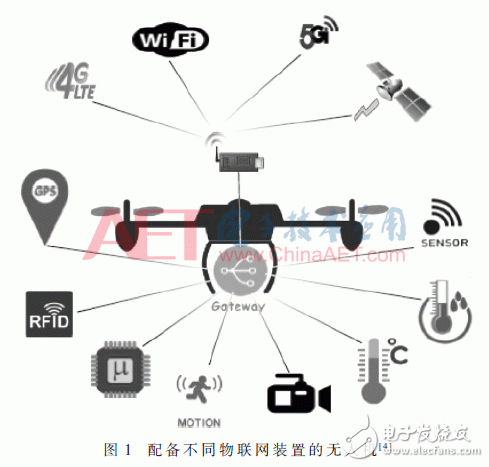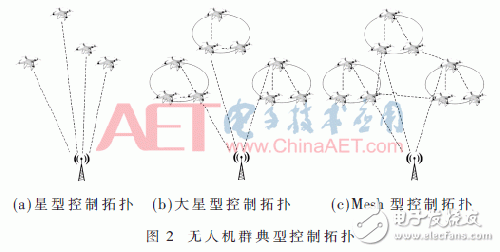The typical architecture of the IoT drone application and the technical difficulties of its implementation are introduced in detail.
In the Internet of Things, UAVs can realize IoT services for service delivery and IoT value-added services including video surveillance, sensor data collection, disaster relief emergency communication, and intelligent transportation. For the application of IOT UAV, the typical architecture and its characteristics are introduced in detail. The key technologies of IoT application are analyzed in detail. Finally, the future development trend is prospected.
Since the Internet was first introduced, it has attracted widespread attention from academia and industry. The Internet of Things aims to realize the interconnection of all kinds of network technologies such as body area network, D2D communication, drone network, satellite network, etc., and can provide any service at any place and any network, and has huge civilian use. With the potential of military applications.
UAVs have been widely used in military and civilian applications. Due to its dynamic deployment, convenient configuration, and high degree of autonomy, UAVs also play an extremely important role in the Internet of Things. The drone realizes the collection of IoT user data through the onboard IoT device (including sensors, cameras, RFID, etc.), as shown in Figure 1. In the Internet of Things, due to the limited transmission range of some wireless devices, drones can be used as wireless relays to improve network connectivity and extend wireless network coverage. At the same time, due to the adjustable flight altitude and mobility of drones, It is convenient and efficient to collect ground IoT user data. At present, there is an intelligent UAV management platform, which can operate several UAVs at the same time through various terminal devices, customize flight routes on demand, and obtain required user data. Intelligent Transportation System (ITS) can realize traffic monitoring by using UAVs. With law enforcement. In addition, drones can also be used as air base stations to improve wireless network capacity. Google used the drone in the SkyBender project to test 5G Internet applications using millimeter-wave technology at a rate 40 times that of 4G systems; the drone-based software-defined radio platform can be used for emergency communications when infrastructure is in jeopardy.

With the continuous deepening and rapid development of IoT applications, IoT applications have evolved from a single service delivery (such as Amazon parcel delivery, power line monitoring, etc.) to a number of IoT value-added services (such as the collaborative development of UAV clusters). Urban pollution monitoring, prevention of geological disasters, military “bee colony†drone technology, etc., can complete IoT tasks that cannot be completed by a single UAV due to limited energy and computing resources. At the same time, with the rise of IoT applications such as smart cities, underwater Internet of Things, Internet of Vehicles, military Internet of Things, and air and space integrated networks, it is necessary to fully utilize drone technology to effectively acquire and transmit relevant data information, including geospatial information. , sensing data information, allegations, etc., to further promote other IoT value-added services including cloud computing, big data, artificial intelligence, and so on. The application of IoT drones will be of great significance to the future development of the Internet of Things.
1 IoT drone application key technologyIn order to adapt to the diversity of IoT development and provide better services to users, UAV applications need to study the following key technologies.
1.1 UAV network topology control technology
With the development of the Internet of Things technology and the limitations of the UAV's own resources, the application of UAVs has gradually shifted from controlling a single UAV to controlling the UAV group, and collaboratively implementing and completing IoT services.
The network of drone groups is called flight self-organizing networks (FANETs), but it has its own characteristics compared with MANETs and VANETs. The control of the network topology of the UAV group by the ground control station or satellite will directly affect the coordination of the UAV group and the collection, sharing and processing of IoT data. The following is a typical UAV network control topology, as shown in Figure 2.

(1) Star-controlled topology: In this control topology, all drones are directly connected to one or more ground control stations (or satellites) and relayed between the drones by ground control stations (or satellites) Data exchange, as shown in Figure 2 (a). In this control mode, all single drones can be controlled centrally by the ground control station, and are widely used in the civil field. However, with the continuous expansion of the unmanned aerial vehicle fleet, there are problems such as the ground control station will become a bottleneck node and cause more delays, and direct communication between drones.
(2) Large star control topology: Under this control topology, all UAVs are divided into multiple groups, and the UAVs in each group form a star structure and are directly connected to one or more grounds by each group of central nodes. The control station (or satellite), and the ground control station (or satellite) relays the data exchange between the central nodes of each group of drones, as shown in Figure 2(b). In this control mode, some UAVs are allowed to communicate directly, which can effectively reduce the downlink bandwidth requirement and reduce the delay. However, due to the inability of direct interoperability between the unmanned units and the rapid dynamic changes of the UAV network topology, there are problems such as insufficient network robustness.
In many electronic communication equipment and instruments where always use some cable assemblies to connect some electronic units and circuits. Xi'an KNT Scien-tech can use their technology, euqipment, skilled operation, advanced test equipment and method (IEC 9661-4). different connnectors (SMA, SMB, N, TNC, etc. ) and different cables (FLExible cable, semi-flexible cable, Semi-rigid cable, corrugated cable etc.) to offer customer various reasonable price cable assemblies fully with the customer requirements.
SMA cable
Xi'an KNT Scien-tech Co., Ltd , https://www.honorconnector.com
